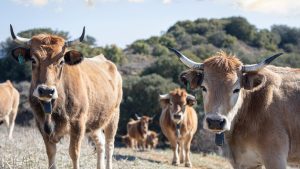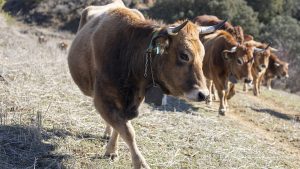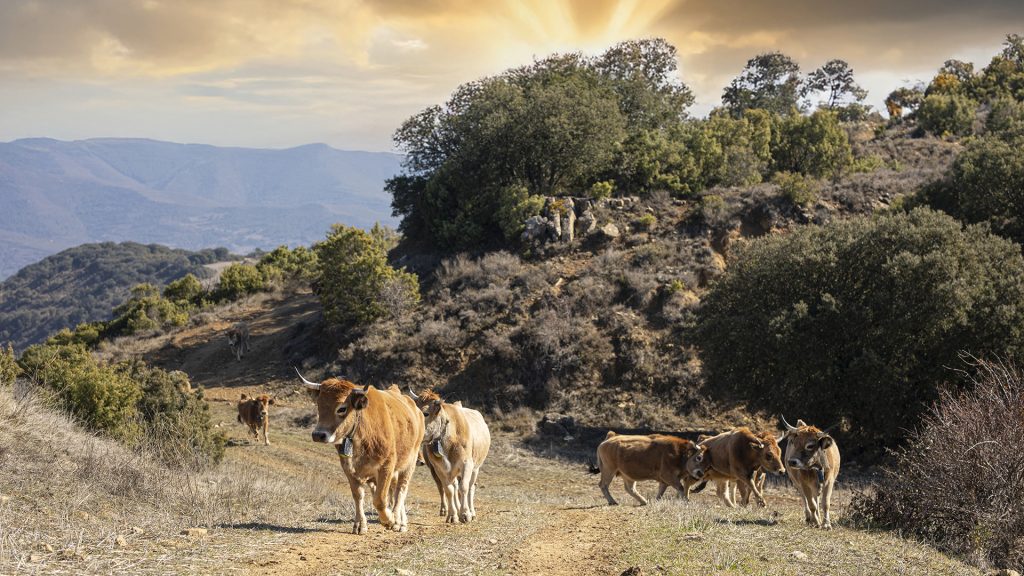As the large-scale carnivorous populations grow in Europe, Nofence offers a new way for farmers and wildlife to live together by helping animals follow natural instincts and escape in the event of an attack.
Over the past half century, large carnivorous animals have revived prominently in Europe. This is a widely recognized conservation success made possible by conservation laws and habitat improvements. This is a biodiversity milestone, but presents a real challenge for livestock farmers, especially in mountainous and remote areas.
As predator populations increase and territory expand, physical fencing has long been considered a line of defense, but has been tested. However, this method comes with an inherent paradox. Physical fences keep animals in but can also trap livestock once predators enter and jump, sneak, or overcome violations. In livestock and forest environments, the risks are very real in environments where livestock is widely grazing and it is difficult to maintain fences. When a predator enters, the same barrier is trapped inside and prevented from escaping.
Virtual fencing offers a new way. Without physical barrier constraints, animals are no longer at risk of being trapped. The Nofence system is not just a grazing tool, it is a potential lifeline. It allows the animals to be with them, pay attention and give them the opportunity to escape.
Lead the animals and don’t lock them up
Nofence is the world’s first virtual fencing system in my hometown, combining a GPS-enabled collar connected via a cellular network with a user-friendly app. Farmers use the app to remotely design and adjust grazing boundaries, while the collar gently guides and tracks the animals using escalating audio cues. As we approach a defined boundary, instead of immediate correction, the system can respond aggressively by using a series of audio cues that increase pitch as the animal approaches, and by actively responding and stopping before receiving a mild electrical pulse. Over a short period of time, animals learn to respond only to audio cues and rarely cause pulses. This contributes to a more gentle and predictable grazing environment.
Unlike traditional fences, virtual boundaries do not fragment or interfere with movement of the flock. This is especially valuable in areas where predators are prone to occur. When livestock are attacked, they are not trapped in wires or trapped in fixed boundaries. Instead, the nofence system allows you to naturally disperse, reorganize, or escape actions that are important when avoiding attacks.

Additionally, Collars features live surveillance and live location tracking. If an animal stops moving for a certain period of time or escapes a set boundary, farmers will receive push notifications via the app so they can be investigated immediately. In these areas, this feedback makes all the difference, allows for early intervention, and provides valuable data on animal behavior before, during and after attack.
Living with a wolf
In the rugged mountainous regions of northern Spain, farmers like Gonzalo learned to deal with the unpredictability of nature. Cows grazing the shared highland pastures of Picos de Europe face increasingly familiar challenges to European livestock producers: wolves attacks.
Gonzalo said, “100% of the territory I control is occupied by wolves.” Although he cannot control the presence of predators, Gonzalo has focused on what he can influence: how he manages his animals and how he reacts when dangers appear.
Two years ago, he lost up to 10% of his pack to attack. This issue wasn’t just about the presence of wolves. It was the fragmentation of herds, the lack of timely responses, and the difficulty of gathering animals in remote, heterogeneous topography.
It was changed by nofence. With a virtual fencing system, Gonzalo reorganized her cows with calves and kept them close in designated grazing areas. This simple change in herd structure made a significant difference. He says, “Not one calf was lost last year. Zero.”
Importantly, Gonzalo does not guarantee safety by location alone. Grouping does that. In particular, cows with calves stored in close groups using Nofence were able to better detect threats, protect themselves, and protect young people.
It’s not about fighting predators. It is to provide the animals with the necessary conditions to respond naturally.
Next nature
Animals evolved their own defence strategies long before humans introduced fences. In herd species such as cows, goats, and sheep, grouping groups improves vigilance, allows for faster detection of threats, and helps coordinate flight or defensive behavior. This is well documented in ethylology and supported by recent research into livestock behavior and virtual fencing.
A study published in the Veterinary Science Frontier found that cows exposed to virtual fencing quickly learned to avoid boundaries simply by observing their herd mates. In the majority of cases, animals retreated from the virtual boundary without responding to the escalation of the audio cue or receiving electrical pulses led to group action. The researchers described this as social promotion, a phenomenon in which animals mimic peers’ behavior in response to environmental cues.
This learning dynamic is particularly notable in the dairy cow manipulation of mothers or cows learning the system by following the dam. By the time they are old enough to wear the collar, they already know how virtual boundaries work.
This collective responsiveness is more protective than just efficient. Group-level learning means fewer animals are exposed to aversive stimuli and can be adapted quickly in high-risk situations. It reflects what is found in wild herbivores. Close group cohesion reduces individual predation risk, increases group awareness, and supports coordinated movements during flight.

Nofence’s virtual fencing system enables these instinctive behaviors, rather than limiting them. Unlike traditional physical barriers, animals can be distributed by not catching them, chasing them, or defensively grouping them. As reported in a study published in the Journal of Rural Studies, sheep farmers were interviewed to confirm that GPS colours and virtual fencing tools can help identify predator attack patterns and support more intentional grazing strategies, such as adopting strict flock structures.
As highlighted in fences and biosecurity, politics governing unruly nature is that the problem with physical fencing represents an attempt to impose static human control on dynamic natural systems. These often ignore the patterns of adaptation that animals rely on for survival, such as movement, distribution, and reorganization in response to threats. In contrast, virtual fencing works with these patterns, giving animals the flexibility to act according to their nature.
In a densely populated environment with predators, its flexibility can make all the difference.
Conclusion
As Europe works to restore large carnivorous populations, farmers are being asked to adapt. Nofence offers a path forward. This is not a tool that does not rely on the construction of a sturdy or higher fence, but rather a support for the natural behavior of the animal itself.
In predator-prone environments, this shift can create a difference between vulnerability and resilience.
About nofence
Founded in 2011 by goat farmer Oscarhofde in Norway, Norfence is the world’s first commercial virtual fencing system for livestock and serves as a sustainable alternative to traditional fencing. Animal grazing areas are managed using GPS colors that communicate with the app using a mobile network. An escalating acoustic warning is played when the animal crosses the virtual boundary. Ignoring the sound gives you a light electric pulse. Animals will learn this immediately over a training period of up to one week, depending on variables such as breed and animal age. The collar can be purchased online here.
The company’s virtual fence has become popular since pilot customers first began using it in Norway in 2016, and the company has recently sold 150,000 collars in Europe. This is a powerful testament to the success of new technologies. Nofence has over 90 employees distributed worldwide between Norway, the UK, Ireland, Spain and the US.
This article will also be published on us
Source link

